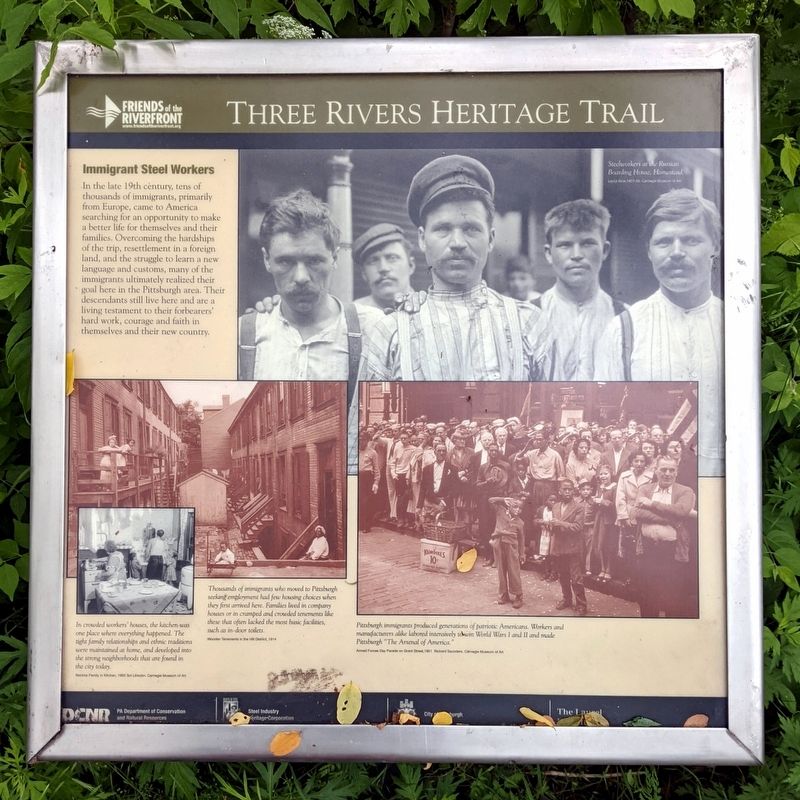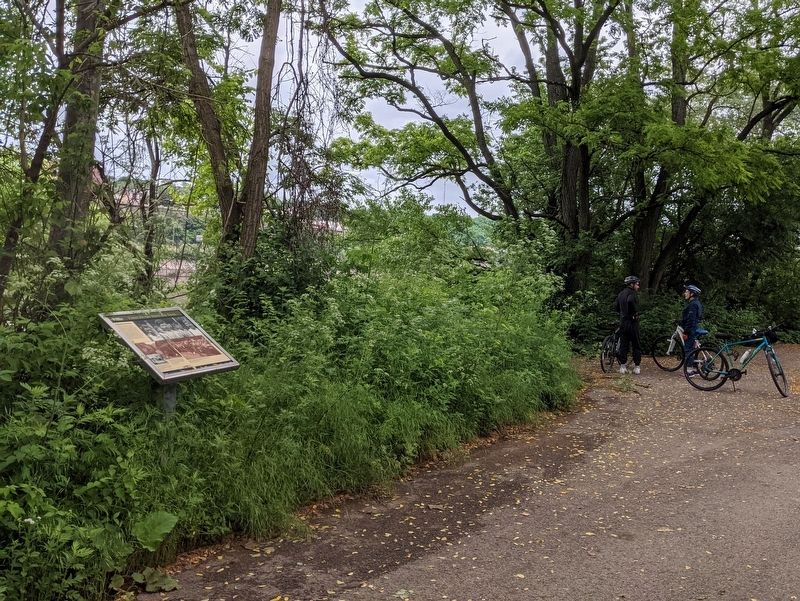Immigrant Steel Workers
Three Rivers Heritage Trail
(captions)
In crowded workers' houses, the kitchen was one place where everything happened. The tight family relationships and ethnic traditions were maintained at home, and developed into the strong neighborhoods that are found in city today. Rochna Family in Kitchen, 1950 Sol Libsohn. Carnegie Museum of Art
Thousands of immigrants who moved to Pittsburgh seeking employment had few housing choices when they first arrived here. Families lived in company houses or in cramped and crowded tenements like these that often lacked the most basic facilities, such as in-door toilets. Wooden Tenements in the Hill District, 1914
Pittsburgh immigrants produced generations of patriotic Americans. Workers and manufacturers alike labored intensively to win World Wars I and II and made
Pittsburgh "The Arsenal of America." Armed Forces Day Parade on Grant Street, 1951 Richard Saunders. Carnegie Museum of Art
Steelworkers at the Russian Boarding House, Homestead. Lewis Hine, 1907-08. Carnegie Museum of Art
Erected by Friends of the Riverfront, DCNR, Steel Industry Heritage Corporation, City of Pittsburgh, The Laurel.
Topics. This historical marker is listed in this topic list: Industry & Commerce.
Location. 40° 25.926′ N, 79° 58.945′ W. Marker is in Pittsburgh, Pennsylvania, in Allegheny County. It is in the South Side Flats. Marker is on Three Rivers Heritage Trail, 0.1 miles west of South 18th Street, on the right when traveling west. Not accessible by motorized vehicle. Touch for map. Marker is in this post office area: Pittsburgh PA 15203, United States of America. Touch for directions.
Other nearby markers. At least 8 other markers are within walking distance of this marker. Oliver Iron and Steel (about 800 feet away, measured in a direct line); Ormsby River Farms (approx. 0.2 miles away); Black Diamonds (approx. 0.2 miles away); Coal Transportation (approx. 0.2 miles away); South Side Vietnam Veterans Memorial (approx. ¼ mile away); Polish Army (approx. 0.3 miles away); South Side Market House (approx. 0.3 miles away); Pennsylvania Canal in Pittsburgh (approx. 0.3 miles away). Touch for a list and map of all markers in Pittsburgh.
Also see . . . Friends of the Riverfront. (Submitted on June 2, 2021.)
Credits. This page was last revised on February 2, 2023. It was originally submitted on June 2, 2021, by Bernard Fisher of Richmond, Virginia. This page has been viewed 182 times since then and 34 times this year. Photos: 1, 2. submitted on June 2, 2021, by Bernard Fisher of Richmond, Virginia.

